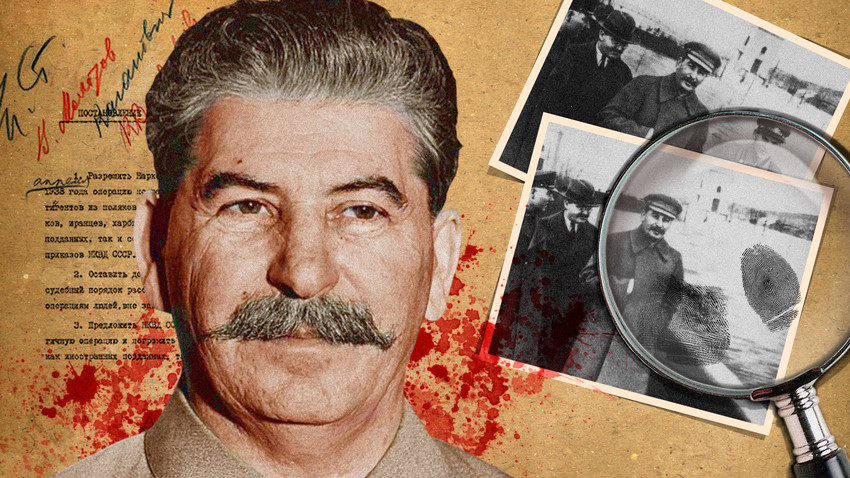Long before the Photoshop, Stalin had his ways of erasing people from photos.
Alexander Kislov
Not only did many of Joseph Stalin’s political rivals lose their lives – all traces of their existence were wiped off the face of the planet, including any photos of them.
When George Orwell published his dystopian masterpiece 1984, he was in part inspired by Joseph Stalin’s Soviet Union. There are lots of parallels between the world of 1984 and Stalin’s Russia, and one concerns the protagonist’s occupation. He works in the “Ministry of Truth,” where people “revise” history, deleting every trace of those who fell out of Big Brother’s grace.
This also happened in Stalin’s USSR. One day a politician may have been in favor, the next he could be facing the firing squad as an enemy of the people. In Soviet Russia, people were literally written out of the history books. Here are some examples.
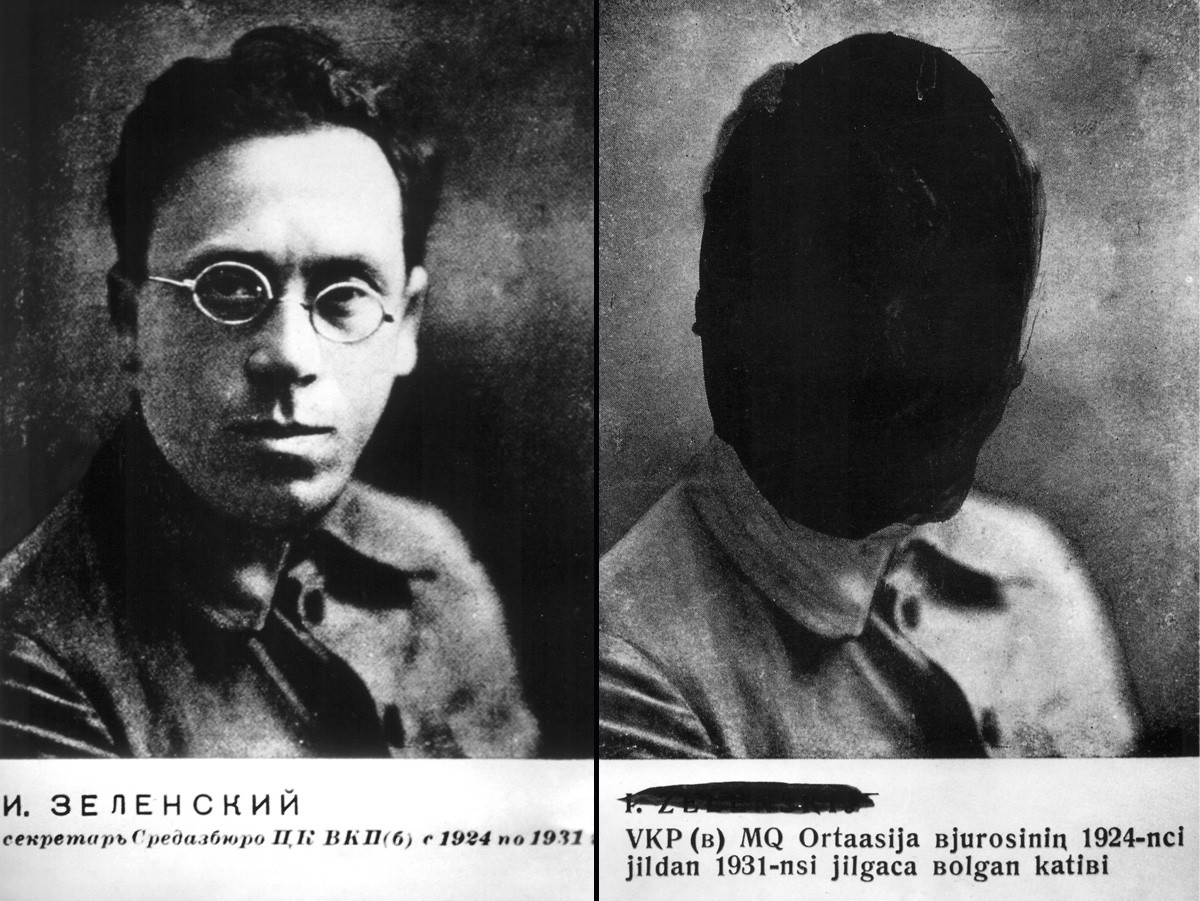
David King/Kontact-Kultura Press, 2012
From 1906, Isaac Zelensky championed the Bolshevik Party. Loyalty to Stalin didn’t save Zelensky, a former party boss in Uzbekistan, from being shot in 1938 – and being erased from all pictures. Famous Soviet Alexander Rodchenko was forced to delete Zelensky from one of his photos by unceremoniously daubing him in black paint.
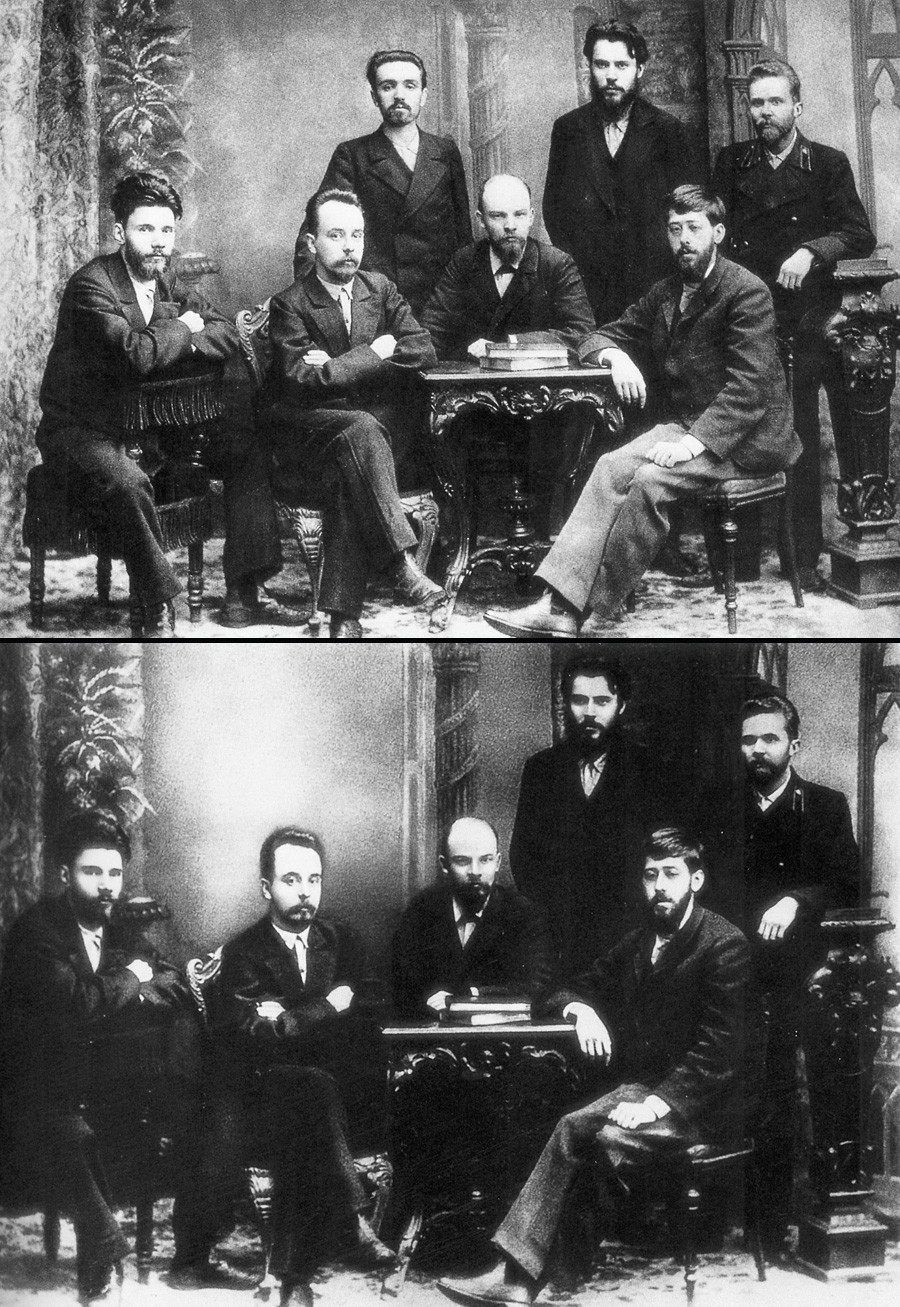
David King/Kontact-Kultura Press, 2012
Official photos were retouched with a little more care. This historic picture showed young socialists in 1897 before some of them rose to power. You’ll recognize a young Vladimir Lenin (in the middle) – of course, he kept his place. Alexander Malchenko (standing, on the left) was not so lucky: in 1930 he was accused of being a spy, executed, and replaced with a white spot.
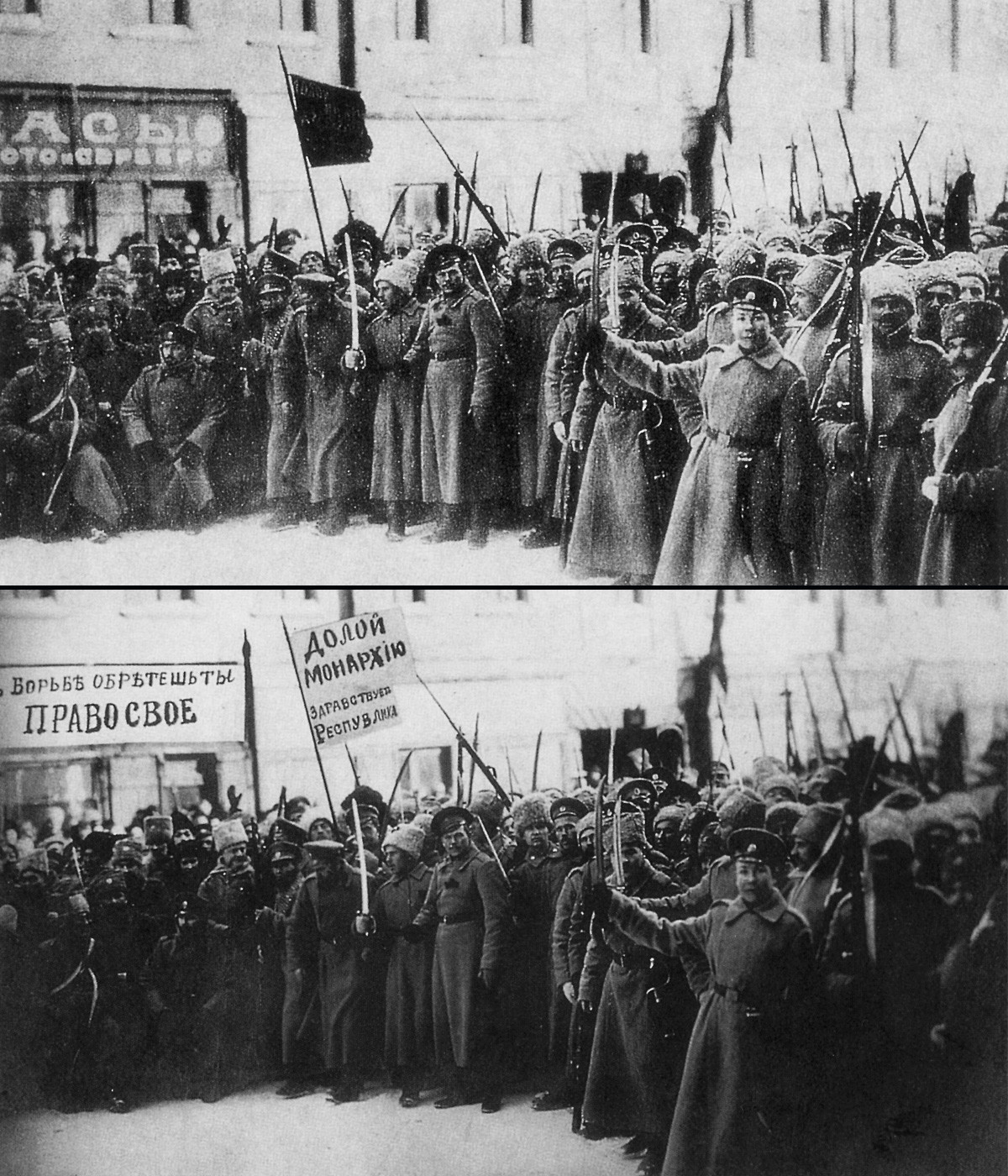
David King/Kontact-Kultura Press, 2012
Airbrushing Soviet history was sometimes about adding aspects, not just deleting them. For instance, this picture from a 1917 demonstration was not considered revolutionary enough by the powers that be: the shop sign on the left says “Clocks. Gold and silver” and the text on a flag is unreadable. But hey presto, a little bit of Bolshevik magic later and the sign reads “You’ll take what’s yours through struggle” and the flag – “Down with the monarchy!”
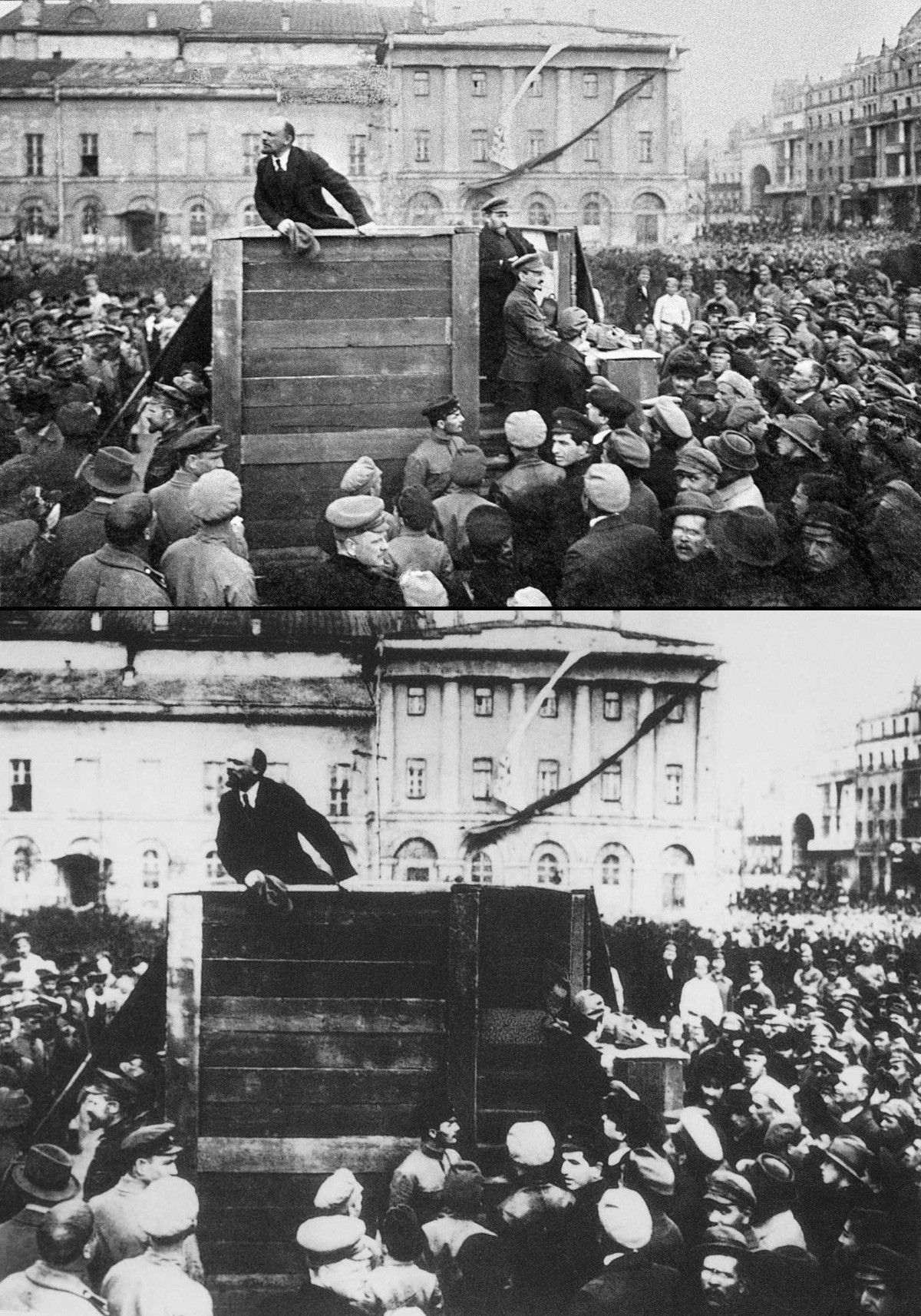
David King/Kontact-Kultura Press, 2012
Some political figures were doomed to disappear from everywhere. Leon Trotsky, once Lenin’s right-hand man before becoming Stalin’s archenemy, suffered this fate – let’s just say he wasn’t very photogenic. A classic example: in this photo from 1920, Trotsky, in a cap, stands nearby Lenin who is giving a speech from a tribune. In the later version, Trotsky is nowhere to be seen. Trotsky was exiled from the USSR in 1929 but he continued his political struggle against Stalin from abroad, before being assassinated by the Georgian’s henchman in 1940.
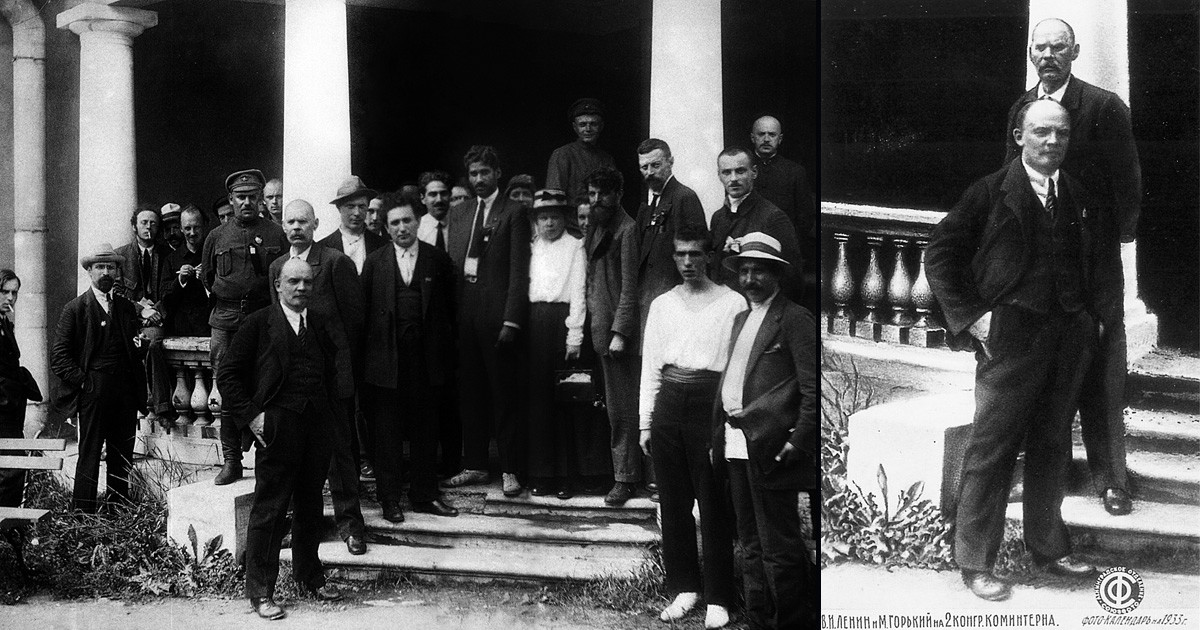
David King/Kontact-Kultura Press, 2012
Lenin, who was turned into a kind of a Socialist saint after dying in 1924, remained a constant in all photos. But those who surrounded him were often not so fortunate. This group photo from 1920 contained so many “people’s enemies” (Grigory Zinoviev, Nikolai Bukharin, Karl Radek – all shot in the 1930s) that the authorities cut it down to just Lenin and proletariat writer Maxim Gorky (behind Lenin, with the mustache).
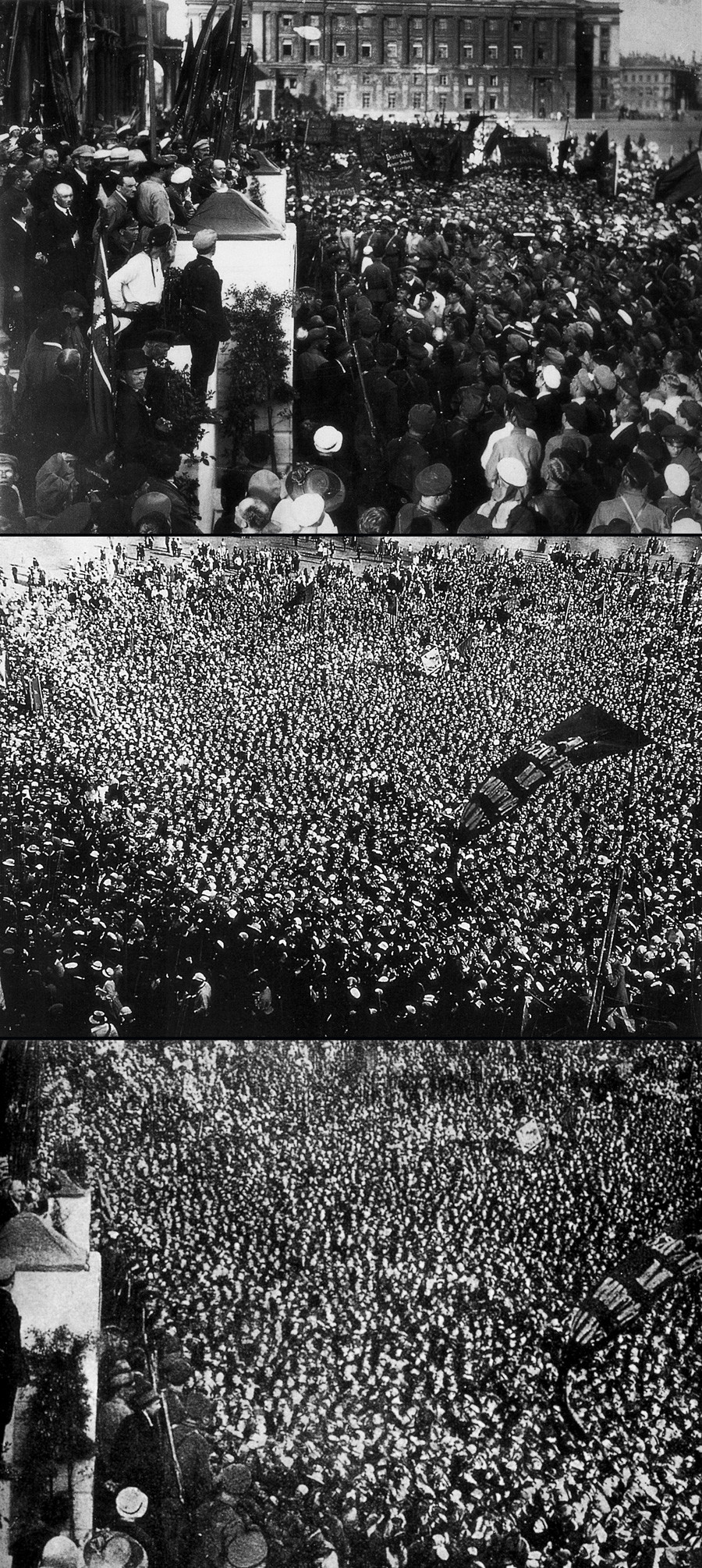
David King/Kontact-Kultura Press, 2012
Here’s another case of embellishing a picture with extra details. Lenin was speaking to a crowd in 1920 but four years later, before publishing the image, the editors decided to make his audience bigger – so they used a larger crowd from another photo.
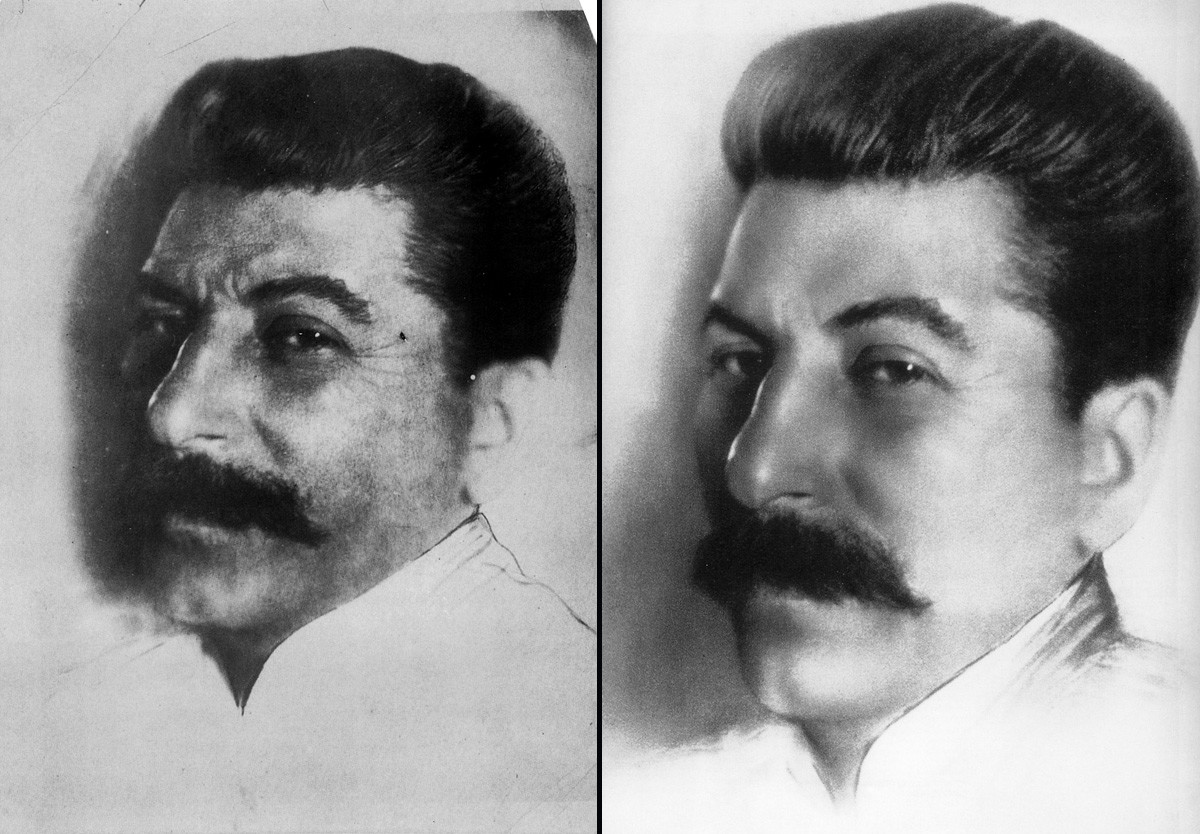
David King/Kontact-Kultura Press, 2012
There were many pitfalls when photographing Joseph Stalin. The original picture from 1924 doesn’t do a very good job at concealing his pockmarked skin, the result of suffering from smallpox as a child. It comes as no surprise that a printed version of this photo, published in 1939, when Stalin was an almighty leader, was seriously retouched – as you can see, his skin is smooth, his hair and mustache silky.
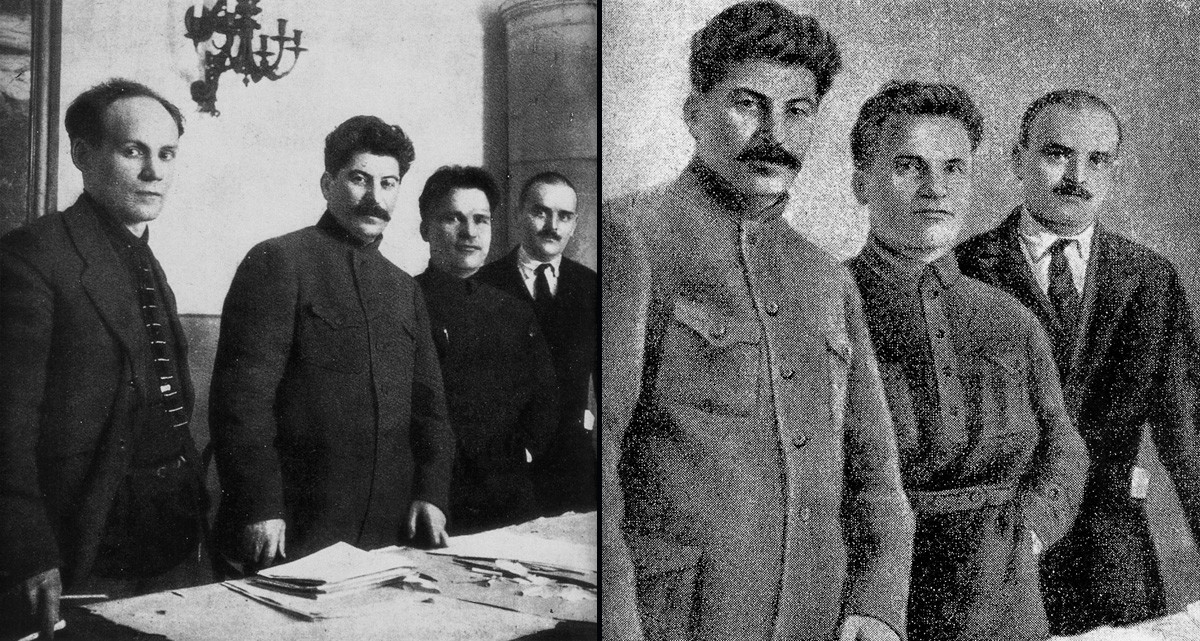
David King/Kontact-Kultura Press, 2012
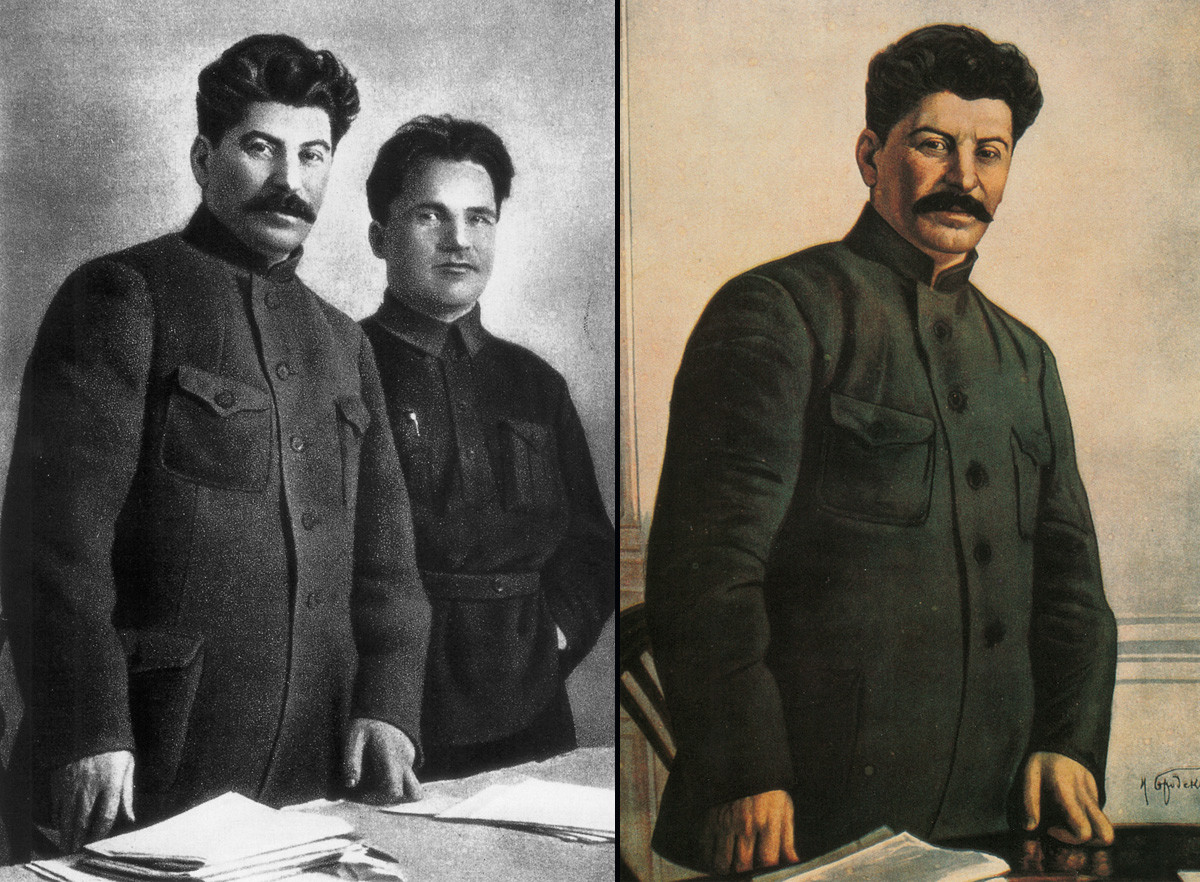
David King/Kontact-Kultura Press, 2012
This company looks pretty tight – the picture was taken in 1926 and portrays Stalin with party bosses Nikolai Antipov, Sergey Kirov, and Nikolai Shvernik (from left to right). One by one, all except Stalin disappeared from the picture. Antipov’s case was classic: arrested in 1938, shot in 1941. The other two, Kirov and Shvernik, didn’t even fall out of grace but it didn’t matter. Stalin stands alone, and he called the shots.
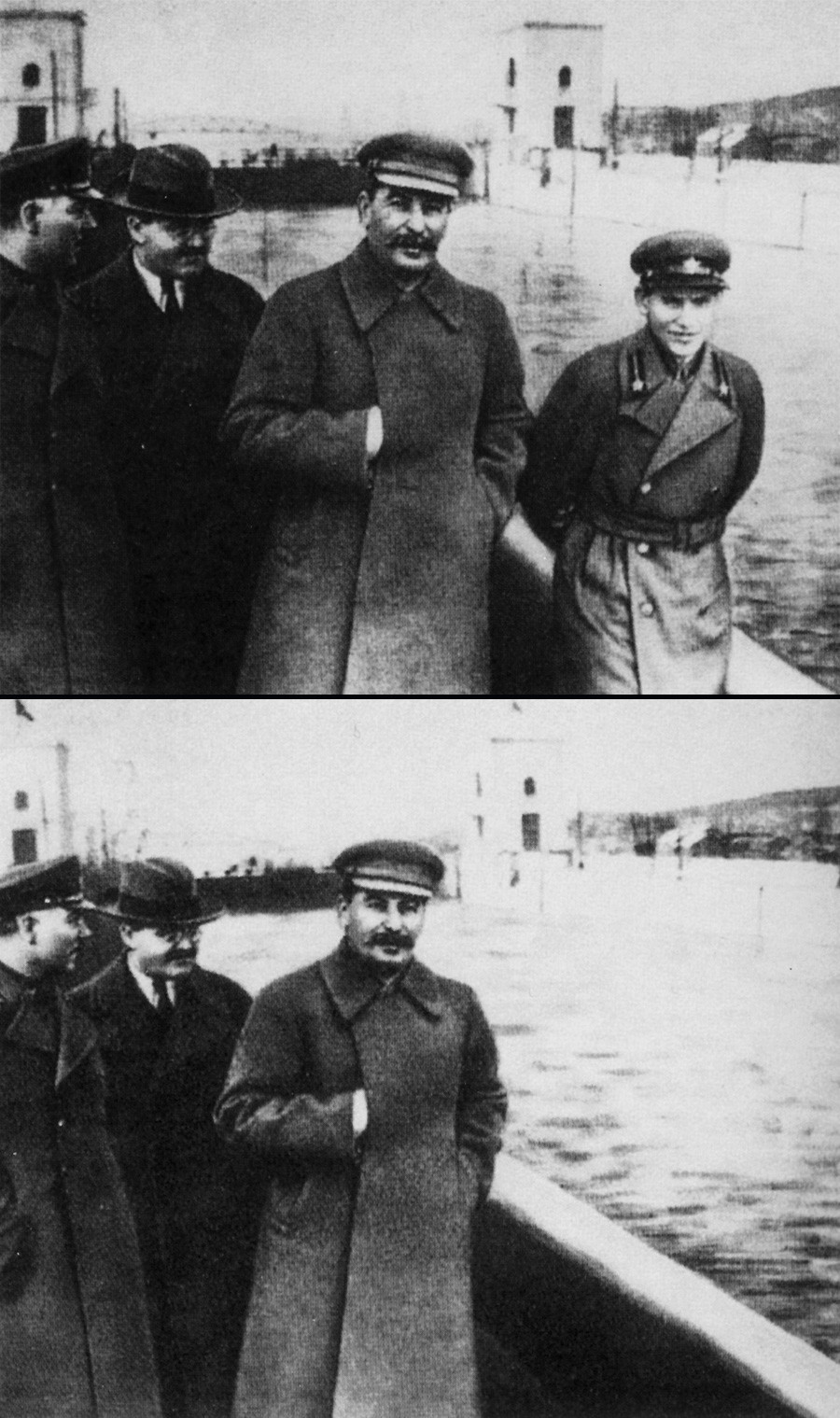
David King/Kontact-Kultura Press, 2012
If there is one ironic thing about Stalin’s terror (that claimed at least 786,000 lives) it is how many architects of repressions faced the same fate suffered by their victims. Nikolai Yezhov (on the right), People’s Commissar for Internal Affairs, who headed the repression machine from 1936-1938, when the purges reached their peak, was himself arrested in 1939 and shot, so he disappeared from every official photo.
Yezhov followed the path of his predecessor Genrikh Yagoda. What’s more, Lavrenty Beria, who replaced Yezhov and arrested him, also fell out of grace and was executed – after Stalin’s death, though.
There are many peculiar stories about Joseph Stalin and his controversial means of ruling the country. Here we have an article on how a Soviet girl got famous after a photo with him – which didn't save her life from turning into a nightmare.
If using any of Russia Beyond's content, partly or in full, always provide an active hyperlink to the original material.
